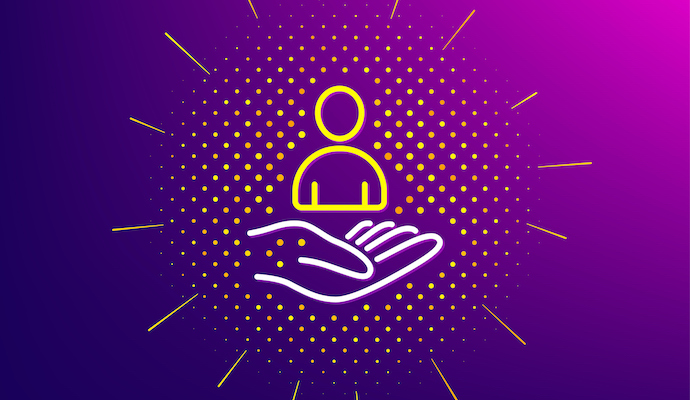Collaboration, Patient Education Key to Increasing Medicaid Coverage
Many individuals experiencing coronavirus-related job loss do not know they are eligible for Medicaid. But provider collaboration and patient education can ensure these patients receive proper coverage.

Source: Getty Images
- The recent surge in furloughed employees and unemployed individuals is bringing to light one major problem: how are these people going to get health insurance? Made worse by the growing pandemic, industry experts are unsure of the fate for employer-sponsored healthcare.
The coronavirus pandemic lead to unprecedented unemployment rates across the United States. In May alone, the unemployment rate was 13.3 percent according to the United States Bureau of Labor Statistics.
Coronavirus-related job losses meant many employees also lost employer-sponsored health insurance. Many of these individuals may be eligible for Medicaid coverage but this could be dependent on if they live in an expansion state, a recent study from the Urban Institute revealed.
According to new data, many furloughed employees are still receiving health insurance coverage from their employees. But it is difficult to fully understand the extent of the problem.
“Right now we’re in a situation where it seems like enrollment in the marketplaces has not increased as fast as we might have guessed,” said Linda Blumberg, PhD, institute fellow at the Health Policy Center at the Urban Institute and lead researcher on the former study.
READ MORE: 6 Fixes to Improve Medicaid Coverage Access Amid COVID-19
While some employers have laid off or furloughed their employees, some have maintained their health insurance coverage. Others have not.
So understanding the true number of individuals who are not covered is complicated, and figuring out who to promote the Medicaid insurance exchange to is an even bigger challenge.
Add in that Medicaid eligibility varies by state and the true extent of the problem may never be known.
“There’s a pretty dramatic difference in eligibility as we showed in the study both in terms of level of the share of workers who would be eligible for assistance if they lost their jobs and of those who are eligible for something what they would be eligible for depending upon whether or not they live in an expansion state or a non-expansion state,” Blumberg explained.
States that expanded Medicaid under the Affordable Care Act increased the eligibility requirements for the Medicaid program. So more individuals were eligible to receive the benefit.
READ MORE: Medicaid Spending, Enrollment Exceed Projections Due To COVID-19
“There’s a really great difference between expansion and non-expansion states,” Blumberg reported. “Almost 70 percent would be eligible for some assistance if they lived in a Medicaid expansion state, whereas less than 50 percent would be eligible in a non-expansion state.”
Results revealed that 78 percent of expansion state workers in the most vulnerable industries would be eligible for assistance compared to 59 percent of their counterparts in non-expansion states.
What’s more, it was those most vulnerable populations who were those most likely to lose their jobs as a result of the coronavirus shutdowns. Those jobs included those in retail, taxi and limousine services, child day care services, sports, performing arts, recreation and amusements, restaurants, barbershops and beauty salons, and travel accommodations.
“Getting people to be aware that they need to be eligible for Medicaid really needs to fall on the state and the federal government,” Blumberg furthered. “Employers can also play a role here to tell their workers as they’re being let go that it’s important for them to check to see if they’re eligible for Medicaid coverage.”
One-third of vulnerable workers and family members were already enrolled in Medicaid at the time of the study, so their coverage was secure. But for 67 percent of workers, health insurance coverage is unknown.
READ MORE: Medicaid, CHIP Amendments Help States Fight COVID-19 Outbreak
Many across industries can help close this gap, Blumberg said. It will take collaboration between former employers, state Medicaid and CHIP programs, social workers and care navigators, and other healthcare stakeholders to educate patients about their potential insurance options.
“Providers can play a role here, particularly for Medicaid and CHIP, because enrollment in that program is generally retroactive,” she continued. “If the provider can identify somebody who’s uninsured, that provider can also help give information to connect people to assistance agencies. In that way, the provider can then get reimbursed for the care they deliver.”
Social service workers can play a role, too. For example, a patient obtaining food stamps can be asked about her health insurance coverage simultaneously.
“Connect the dots for people who are uninsured,” Blumberg said. “It’s a multi-pronged effort.”
Raising awareness and helping individuals understand that they are eligible for safety-net programs are the priorities.
“We want to make sure that people realize that they have eligibility potentially. Then there’s assistance available to help them through the process,” Blumberg said.
In addition to traditional Medicaid and CHIP programs, many Medicaid Marketplaces provide coverage for individuals within 60 days of losing employment.
“Once you lose your employer-based coverage, you have 60 days in the vast majority of states to enroll in coverage in the marketplaces, with subsidies or without subsidies. Then that window of opportunity closes,” Blumberg explained.
Mounting evidence shows the impact of insurance coverage has on numerous health outcomes including lower mortality rates.
“We also know that individuals who are uninsured behave differently with regard to accessing medical care than people who are insured,” Blumberg said. “If you are somebody who’s uninsured, whether you’ve been healthy or not and something occurs, you are much less likely to seek out care when the out-of-pocket cost to you is the full cost of getting care.”
Ensuring individuals most vulnerable to job loss and lack of insurance coverage understand their coverage options is critical.
“Not only are we improving health by keeping people covered but we are making sure that they feel comfortable accessing care when needs arise,” Blumberg concluded.
